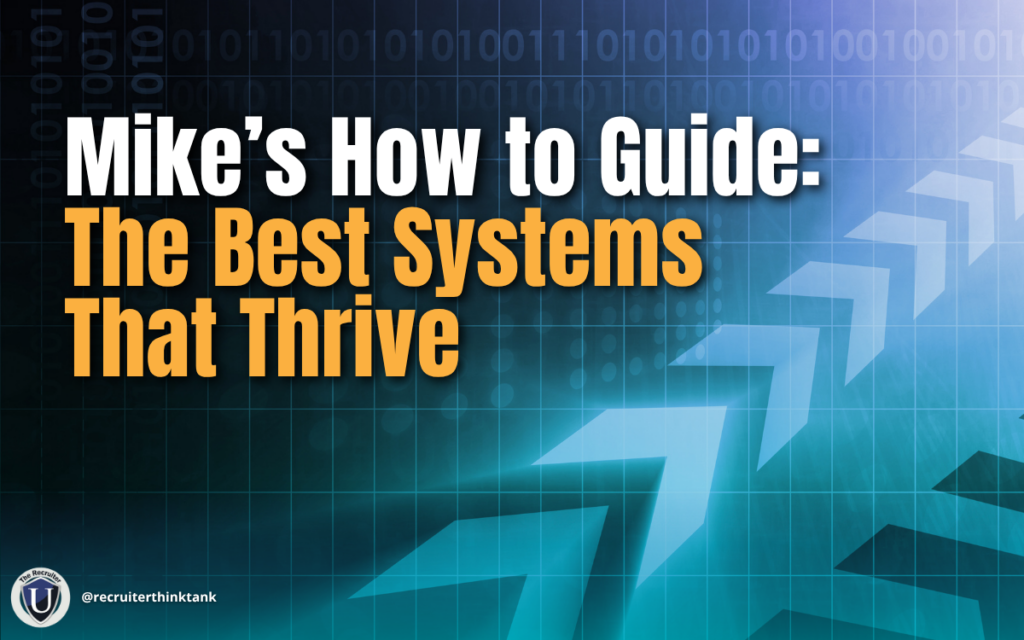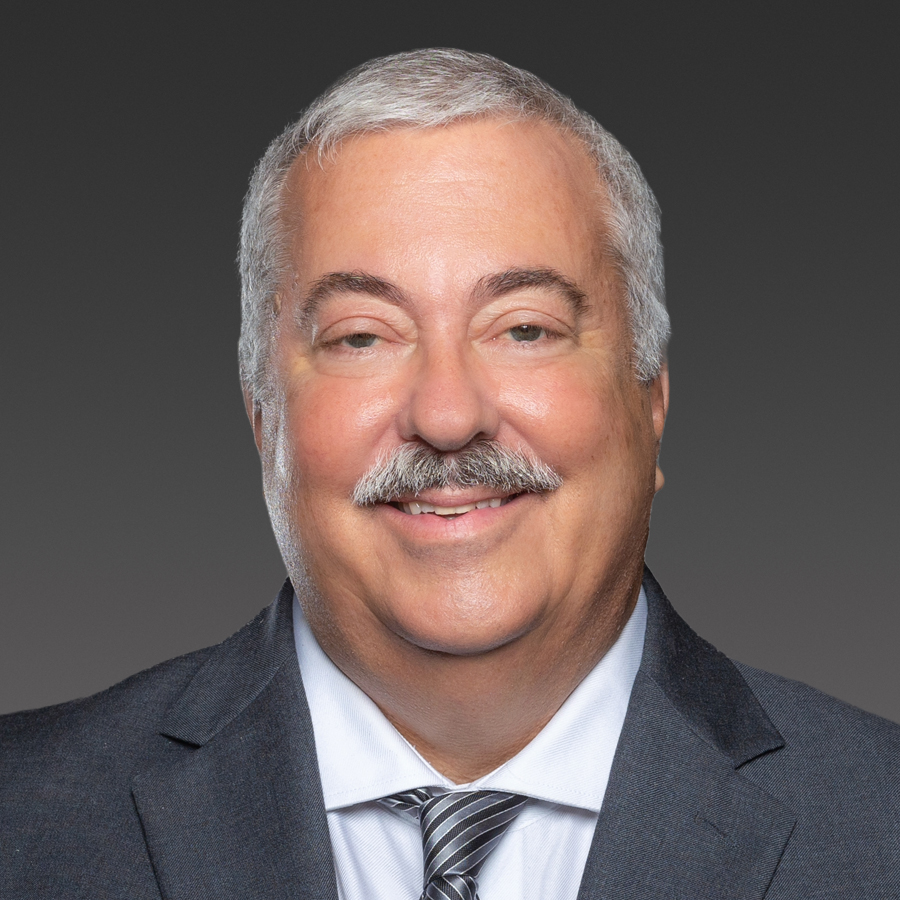
Solo Operators Can Still Scale Without Costly Hires or Giving Up Their Lives
Even if your goal isn’t to sell, if you’re a solo operator with no ambition to open an office or hire a bunch of employees, you can still do most of the things that build value. You can hire a researcher. You can hire an appointment setter. These people are virtual and incredibly great investments because of their low entry cost. It’s a different world now.
When we talk to solos, one of the biggest themes is they want more of their time back. They want to work a three-day week, maybe a four-day week. But at the same time, they think they need to chop their revenue goals by 30 or 40 percent because they’re still thinking in terms of time-for-dollars instead of asking: What has to be true? The systems I’m outlining here—even the ones designed for scaling multimillion-dollar firms—can be applied at the desk level. These are systems and processes you can implement right now.
Performance Management Starts with Yourself
I don’t want to lose the solo operators here, because I’m going to talk about performance management. That includes managing your own performance. For those who’ve seen me speak before, I usually cover metrics and KPIs. I’ll put a bit of a different spin on it today.
Here’s the thing: The one thing we’re all judged on, whether intentionally or not, is placements. And the crazy part? It’s the one thing we don’t fully control. You’ve got two emotional beings involved. No matter how good you are at prepping, debriefing, covering counteroffers, and closing—stuff still happens. Deals blow up. That’s normal. When you track the right metrics, you bake that volatility into your expectations.
So if your goal is to hit $250K, $300K, $400K as a solo operator—or $1 million, $2 million, $3 million as a firm—you need activity measurement. Without it, it’s almost impossible to predict income, hold anyone accountable, or know if you’re even on target.
Measured and Reported = Exponential Improvement
Pearson’s Law says: “That which is measured improves. That which is measured and reported improves exponentially.” And we’ve seen it. In our programs, once clients start tracking and reporting, their production doubles—and their hours usually stay the same or even go down after a few weeks.
Placements are emotional roller coasters. I’ve had deals blow up after checking every box. And you know what? Sometimes the candidate or employer just isn’t honest. I can’t control that. There’s no system to improve someone else’s integrity. So again, all of this is baked into the system. What we can control is the activity that leads to outcomes.
What If You Could Increase Productivity 37% — Without Hiring, Hustling, or Burning Out?
Join us, May 28-30th | 12-3 PM ET
https://get.therecruiteru.com/leverage-ai

Reverse Engineering the Numbers
Let’s say you’re using a $21K average fee—many are charging more, but I’ll stay conservative. If your goal is $250K, what does that look like in activity?
Twelve placements at $21K = $252,000. To get that, you need one placement a month. If you’re operating at an 8-to-1 interview-to-placement ratio, that’s 96 interviews per year, or about two first-time interviews per week.
How do you know if you or your team member is on target? Are you arranging two interviews a week? Not once in a while, but on average?
At 15 candidate conversations per placement, that means 30 candidate conversations per week—six per day. And yes, I know many are under that. But we’ve got data showing you can talk to four to five people an hour, done right. You also need one and a quarter job orders per week—five per month. That takes about 16 prospect conversations a week, or three per day. Nine total conversations per day.
From our client experience, if you’re talking to nine people a day, you’re probably billing $300K to $350K. These are conservative numbers. Reverse engineer them. If you can focus two hours a day on conversations, you’ll hit the metrics—and you’ve got six hours left for everything else.
Scaling Without Breaking the Model
Let’s say you’re billing $350K and want to grow to a million. Your instinct might be: “I’ll do $350K, someone else will do $350K, and another person will do $300K—we’ve got our million.” But what happens when someone leaves?
You can’t build a business around individuals’ potential output. You’ve got to look at the machine. A million-dollar business requires 7.7 interviews a week. What do you need to do as a leader to make that happen consistently? Hire SDRs. Bring in offshore researchers. Train internal recruiters. Hit eight interviews per week as a team, week in and week out, and you’ve got your million.
Coaching That Actually Moves the Needle
So how do we coach performance? First, don’t get sucked into drama. If you’re a solo operator, coach yourself. Have a meeting where you beat yourself up every week or two. There’s always a reason people don’t execute—their dog caught on fire, their energy was low, their horoscope was off. Whatever.
Here’s how a coaching session should go. Don’t use it to teach technique. You’ve got videos, resources, academies—use those separately. Coaching is about momentum and accountability.
Start with wins. Even small ones. “What progress have you made?” Then unpack issues. “What were your biggest challenges? What opportunities can we take advantage of? Where do you need help?” From there, design a game plan. “Here are three specific things we can count on you to execute before we meet again.”
Don’t talk about deals in progress during coaching. That’s a separate conversation. Done right, a coaching session takes 30–45 minutes. And the best leaders say it’s the one thing they wouldn’t cut from their schedule—it’s where they can be blunt and get honesty back.
Finish with Commitment and Clarity
Wrap up every coaching session with this: “Based on everything we discussed, do you know what to do? Do you know how to do it? Are you committed?”
Coaching isn’t about fixing people in one session. It’s about creating a regular space for clarity, commitment, and execution. Whether you’re leading a team or leading yourself, this is how performance improves—measurably, consistently, and exponentially.

Mike Gionta
Mike is one of the most recognized names in the Recruiting Industry Today.
From almost going out of business in 1991 Mike, after numerous “learning experiences,” built his personal billings consistently over $1,000,000 per year with his best year in personal billings of $2,143,000.00. Mike has coached Solo/Independent Recruiters since 2007 to multiply their earnings without working longer, harder hours.
His training & coaching on becoming a trusted adviser, creating predictable profits, and developing a “self-driving business” has revolutionized the way his clients conduct business. Mike has authored a book How to Double Your Placements in 121 Days or Less and is published frequently in leading Recruiting Industry Trade Journals, the Fordyce Letter and EmInfo.
P.S. Whenever you’re ready… here are 4 ways I can help you grow your recruitment business:
1. Grab a free copy of my Retainer Blueprint
It’s the exact, step-by-step process of getting clients to give you money upfront. https://get.therecruiteru.com/lm
2. Join the Recruiter Think Tank and connect with firm owners who are scaling, too. It’s our Facebook community where smart recruiters learn to make more money and get more freedom. https://www.facebook.com/groups/there…
3. Join me at our next event
Join us at The AI + Systems Playbook for Scaling Search Firms – May 28-30 12-3 PM ET. https://get.therecruiteru.com/leverage
4. Work with me and my team privately
And if you ever want to get some 1:1 help, we can jump on the phone for a quick call and brainstorm how to get you more leads, more placements, and more time. https://get.therecruiteru.com/scale-now
Recent Comments